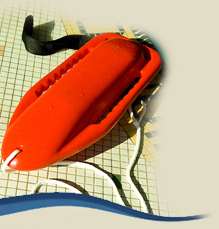 Children can drown in small quantities of water and are at risk in their own homes from wading pools, bathtubs, buckets, diaper pails, and toilets as well as swimming pools, spas, and hot tubs.
Children can drown in small quantities of water and are at risk in their own homes from wading pools, bathtubs, buckets, diaper pails, and toilets as well as swimming pools, spas, and hot tubs.
Drowning is the second leading cause of unintentional injury-related deaths to children ages 14 and under. A temporary lapse in supervision is a common factor in most drownings and near-drownings. Child drownings can happen in a matter of seconds, in the time it takes to answer the phone. There is often no splashing to warn of trouble. Children can drown in small quantities of water and are at risk in their own homes from wading pools, bathtubs, buckets, diaper pails, and toilets as well as swimming pools, spas, and hot tubs.
A swimming pool is 14 times more likely than a motor vehicle to be involved in the death of a child age 4 and under. Of children surviving near-drownings, 5-20 percent suffer severe and permanent disability. Any person who suffers a near-drowning (inhaled water into the lungs) should seek medical attention right away! High surf at the beach may be exciting, but it can also be deadly. Don't let children play in rough surf - it can knock them down and pull them into deeper water. Never swim in the Gulf under Red Flag conditions!
Approximately 50 percent of preschooler drownings occur in residential swimming pools. Each year, 350 drownings (for all ages) occur in bathtubs. Each year, approximately 40 children drown in five-gallon buckets. In ten states--Alaska, Arizona, California, Florida, Hawaii, Montana, Nevada, Oregon, Utah, and Washington--drowning surpasses all other causes of death to children ages 14 and under. Children can disappear from view and drown at the beach in only a few seconds. Stay with - and WATCH -- your children at the beach.
NOTE: CPR (cardiopulmonary resuscitation) can save a child's life in the critical moments after an accident. Learn CPR. The life you save may be your child's.
Get off the beach (if in a boat, get to shore) whenever you see storm clouds or hear thunder. It can strike many miles away from the storm itself. Storms offshore can cause dangerous swimming conditions.
Rip currents can be caused by storms many miles offshore, by tidal changes, or by underwater topography. If you get caught in a rip current, do not try to swim against it. Since most rip currents are relatively narrow, you should swim parallel to the shore - not toward shore - until you are out of the rip current. Then you can swim toward shore.
Patrick Maddox, Director of Public Safety
90 College Boulevard East
Niceville, FL 32578
Phone: (850) 651-7150
Fax: (850) 651-7170
302 N. Wilson St. - Suite 302
Crestview, FL 32536
1250 N. Eglin Parkway, Suite 100
Shalimar, FL 32579
Call 850-689-5050 or 850-423-1542 for all departments.